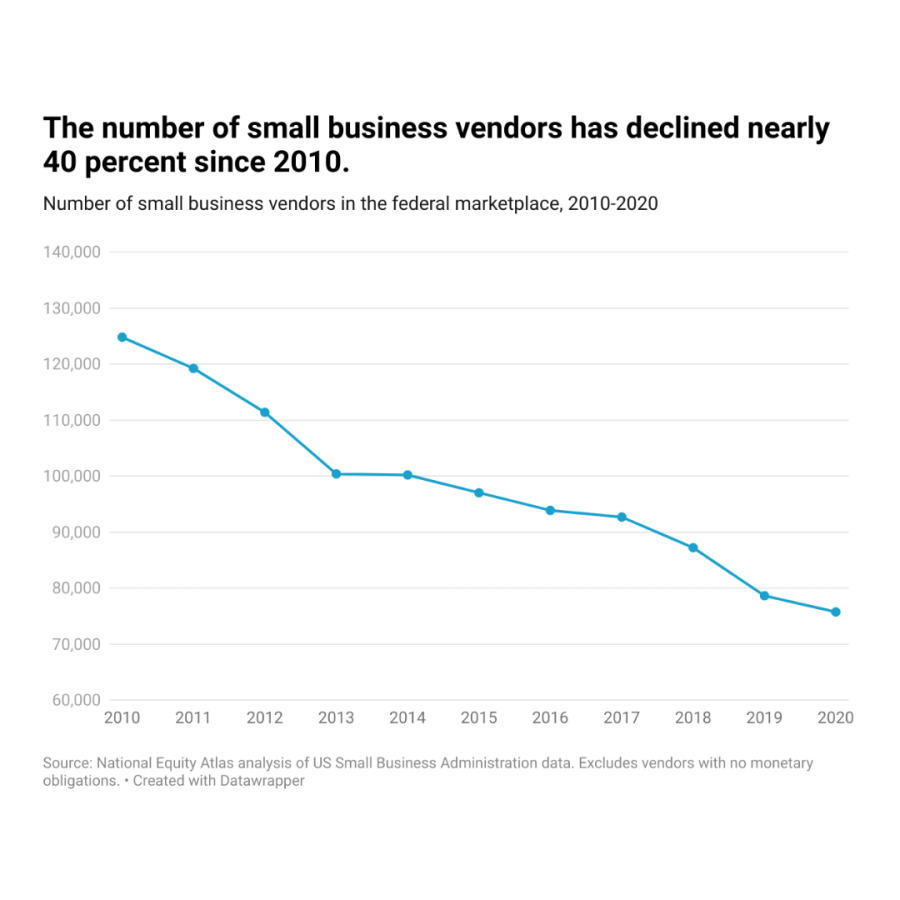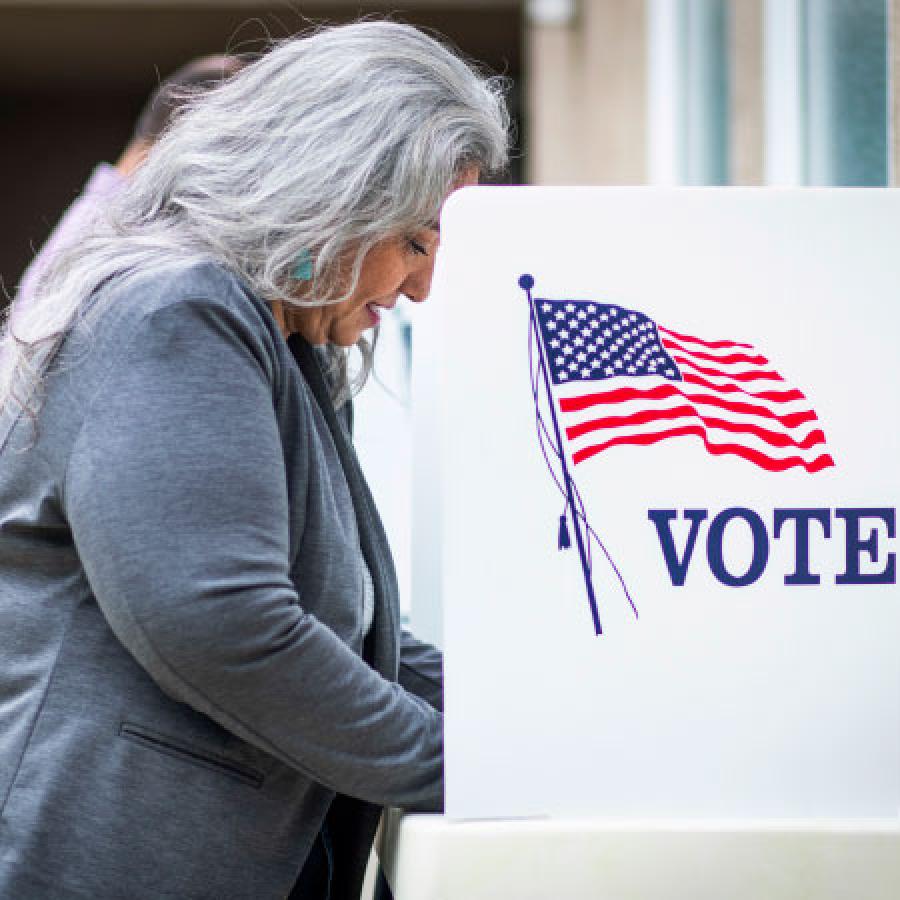Homeownership is Unattainable for Most Bay Area Black, Latinx, Cambodian, and Pacific Islander Households
Our analysis of data on homeownership rates across the nine-county Bay Area reveals persistent inequities in access to wealth-building opportunities across race, nativity, ancestry, and place.
Homeownership can be a critical pathway to economic security and mobility, helping lower-income people build wealth that can be used to pay for education or other productive investments — but it remains out of reach for too many households, especially low-income people of color. This month, we added Homeownership as the 22nd indicator on the Bay Area Equity Atlas to democratize data on homeownership rates by race, gender, nativity, ancestry, and geography between 2000 and 2019, the most recent year for which this data is available. This analysis highlights key insights from this data from the Great Recession through the long economic recovery until right before the Covid-19 pandemic.
Nearly two-thirds of White households in the region own their homes — nearly twice the share of Black households
There are stark differences in homeownership rates by race/ethnicity. Across the broad racial/ethnic groups, White households in the Bay Area are most likely to own their homes (63 percent) — nearly twice as likely as Black households (34 percent). Homeownership rates are also lower for Latinx (40 percent), multiracial (45 percent), and Native American (46 percent) households.
Although six in 10 Asian or Pacific Islander (API) householders own their homes, large disparities are evident within this diverse population. Analyzing homeownership rates by ancestry shows that less than half of Pakistani (43 percent), Laotian (45 percent), Thai (46 percent), Korean (46 percent), and Pacific Islander (41 percent) households own their homes. Cambodian households have the lowest rate of homeownership among API households at 39 percent, though it is important to note that this represents significant progress since 2010 when just 29 percent of Bay Area’s Cambodian population owned their own homes. Taiwanese households have the highest rates of homeownership (72 percent) among API households and across all racial/ethnic ancestry groups. Disparities by ancestry within the Asian or Pacific Islander population in the Bay Area often hold true for other markers of economic security as well.
Racial disparities in homeownership stem in part from income gaps between White households and households of color. Median earnings for Black, Latinx, Native American, and multiracial households in the Bay Area fall below $55,000 per year, whereas White households earn a median annual income of $92,100. The median annual income of Asian or Pacific Islander households is $82,300, but given the diversity of this group, earnings vary considerably across API communities by ancestry.
Black households are the only racial/ethnic group in the Bay Area that experienced consistent declines in homeownership, while Latinx households experienced the largest post-foreclosure crisis dip in homeownership rates
Homeownership rates across the region, which held steady between 2000 and 2010, declined slightly from 58 to 56 percent over the last decade. This drop stems from the rise in renting after the foreclosure crisis, increase in housing costs, and stagnant wages, especially for low- and middle-wage workers. Regional and statewide rates are similar (56 percent compared with 55 percent statewide) and followed a similar trend over the last two decades.
In 2000, 41 percent of Black households in the region owned homes; but by 2010 the share had declined to 37 percent, and by 2019 only 34 percent of Black households owned their homes. Black homeownership rates also declined over both of these time periods in Alameda, Contra Costa, and Santa Clara counties, in the city and county of San Francisco, and in the cities of Oakland and San Jose.
For Bay Area Latinx households, the share of homeowners increased between 2000 and 2010 (from 45 to 46 percent), but then declined by 2019 to 40 percent — the largest post-foreclosure-crisis decline in homeownership of any racial/ethnic group. This steep decline also held true for large cities including Fremont, Oakland, San Francisco, San Jose, and Sunnyvale, and for all counties except for Marin and Napa.
Following overall regional trends, the share of White homeowners increased slightly between 2000 and 2010 but experienced a small dip the following decade. Trends were similar for White homeowners in Oakland, San Francisco, and Sunnyvale, with little variation across counties.
Contrary to overall regional trends, the share of API homeowners in the region rose slightly over each time period. This was also true across most counties. Trends in API homeownership varied across large cities including Fremont, Oakland, San Francisco, San Jose, and Sunnyvale, likely due to the diversity of API populations across those communities.
Unlike most other racial/ethnic groups, the share of Native American homeowners in the region decreased slightly between 2000 and 2010 and rose over the last decade. Data on homeownership rates for Native American households is unavailable for large cities and most counties due to small sample size.
Between 2000 and 2019, The largest decline in homeownership rates across race/ethnicity was among Black homeowners in Solano County (down 10 percentage points). Black homeowners also saw the largest declines in Contra Costa (-8 percentage points), Santa Clara (-8 percentage points), and San Francisco (-7 percentage points) counties. Black and Latinx homeowners were hardest hit in Alameda County (each down 7 percentage points), while Latinx homeowners experienced the largest decline in homeownership in Sonoma County (-6 percentage points). Multiracial residents experienced the largest decline in homeownership rates in San Mateo (-9 percentage points) and Marin (-4 percentage points) counties. Data is unavailable for most racial/ethnic groups in Napa County due to small sample size.
Native American households in Alameda County experienced the largest gains in homeownership rates between 2000 and 2019 (increased 10 percentage points), followed by Latinx households in Napa (+8 percentage points), Asian or Pacific Islanders households in Marin County (+7 percentage points), and multiracial households in Sonoma County (+ 6 percentage points).
Although nearly half of Native American households own their homes, there is a large gender gap
Examining homeownership rates by both race and gender reveals that Native American men are much more likely to own homes compared with Native American women — 54 percent versus 38 percent, respectively. There is also a gap among Black and multiraical homeowners across gender, with Black men and multiracial men more likely to own than women. There are narrower differences in homeownership rates for men and women among other racial and ethnic groups.
Immigrants (especially Black and Latinx immigrants) are less likely to reap the benefits of homeownership than their U.S.-born counterparts
Except for Asian or Pacific Islander immigrants, Bay Area immigrants across all racial and ethnic groups are less likely than their US-born counterparts to own homes. Although Black and Latinx immigrants are least likely to be homeowners (31 and 36 percent, respectively), U.S.-born Black and Latinx households as well as Native American and multiracial households overall have much lower homeownership rates than both immigrant and U.S.-born White and Asian homeowners. Across ancestry, people of Ethiopian/Eritrean ancestry are least likely to own their homes among all racial and ethnic ancestries in the region: just 18 percent of Ethiopian or Eritrean households own homes. Guatemalan households also have one of the lowest homeownership rates at 22 percent.
Black, Latinx, and White immigrants in the region have lower homeownership rates than their US-born peers. Among Black immigrant homeowners, Ethiopian or Eritrean immigrants have the lowest homeownership rates (18 percent) based on available data. Guatemalan (20 percent), Mexican (35 percent), Salvadoran (35 percent), Peruvian (37 percent), and Nicaraguan (37 percent) immigrant homeowners tend to have lower homeownership rates than their US-born Latinx counterparts. Although 64 percent of US-born White households own homes, 56 percent of White immigrants own. Immigrant homeowners who are Turkish (39 percent), Ukrainian (43 percent), Romanian (43 percent), Russian (46 percent), French (53 percent), Canadian (54 percent), and Iranian (56 percent) tend to be less likely to own compared with their US-born White peers.
Racial disparities in homeownership persist across income levels
While higher incomes correlate with higher levels of homeownership, racial inequities persist even when you look at households with similar incomes, revealing how structural racism perpetuates the generational racial wealth gap. Looking at households in the region earning below 350 percent of the federal poverty level — the threshold that the Bay Area Equity Atlas uses for economic insecurity — we still see large disparities in homeownership rates across race. Nearly half of economically insecure White households own homes, which is more than double the share of economically insecure Black households.
People of color still bear the brunt of racist housing policies that locked people out of homeownership opportunities and economic mobility
As an asset-building tool, homeownership depends on access to affordable, sustainable mortgage financing as well as home appreciation rates, both of which are affected by discriminatory lending practices and racial segregation. Wealth also plays a significant role in homeownership and vice versa, and the racial wealth gap is notably larger than the income gap. The long history of racial oppression and segregation in the United States, through which people of color have been dispossessed and excluded from economic prosperity, has contributed to a large racial wealth gap: In 2016, the median net worth of White households was $143,600 but only $21,420 for Latinx households and $12,920 for Black households.
This racial wealth gap, along with racist housing policies such as redlining (denial of home loans in Black neighborhoods) and racially restrictive covenants that barred Black residents and other people of color from purchasing homes, prevented generations of people of color from becoming homeowners. As homeownership remains one of the most widely available and effective ways to increase wealth over generations, the lack of parental homeownership within communities of color today further diminishes the wealth of the current generation and their ability to purchase a home.
To make matters worse, people of color, and Black residents in particular, have been disproportionately impacted by both the foreclosure crisis that fueled the Great Recession and the current economic fallout from the Covid-19 pandemic. The impact of the foreclosure crisis on these largely Black and Latinx households was especially devastating. Nationwide, the foreclosure crisis obliterated Black and Latinx median net worth by an estimated 44 and 48 percent, respectively, between 2007 and 2013. In the Bay Area and across the country, lenders targeted predatory home loans in Black neighborhoods, filling a void in home financing created from redlining decades earlier. Even among applicants with similar credit and financing profiles, the share of Bay Area Black and Latinx households receiving subprime loans was double and more than triple that of White households, respectively. More recently, the onset of the Covid-driven recession has disproportionately impacted communities of color and lower-income communities who have suffered the greatest job losses and mortgage defaults, adding to the catastrophic health impacts of the pandemic.
Grow an equitable economy: Policies to increase sustainable homeownership
Several strategies exist to expand and sustain homeownership opportunities for immigrants, women, and people of color, especially Black and Latinx households. These strategies include promoting shared equity homeownership models, such as community land trusts, Tenant Opportunity to Purchase policies (TOPA), and limited equity cooperatives; providing down-payment assistance programs for low- and moderate-income homebuyers; enacting a strong homeowner bill of rights; and preventing foreclosures and helping households and neighborhoods recover from them. Learn more about homeownership rates in your community, including additional strategies to address persistent inequities, by exploring the homeownership indicator on the Bay Area Equity Atlas.


